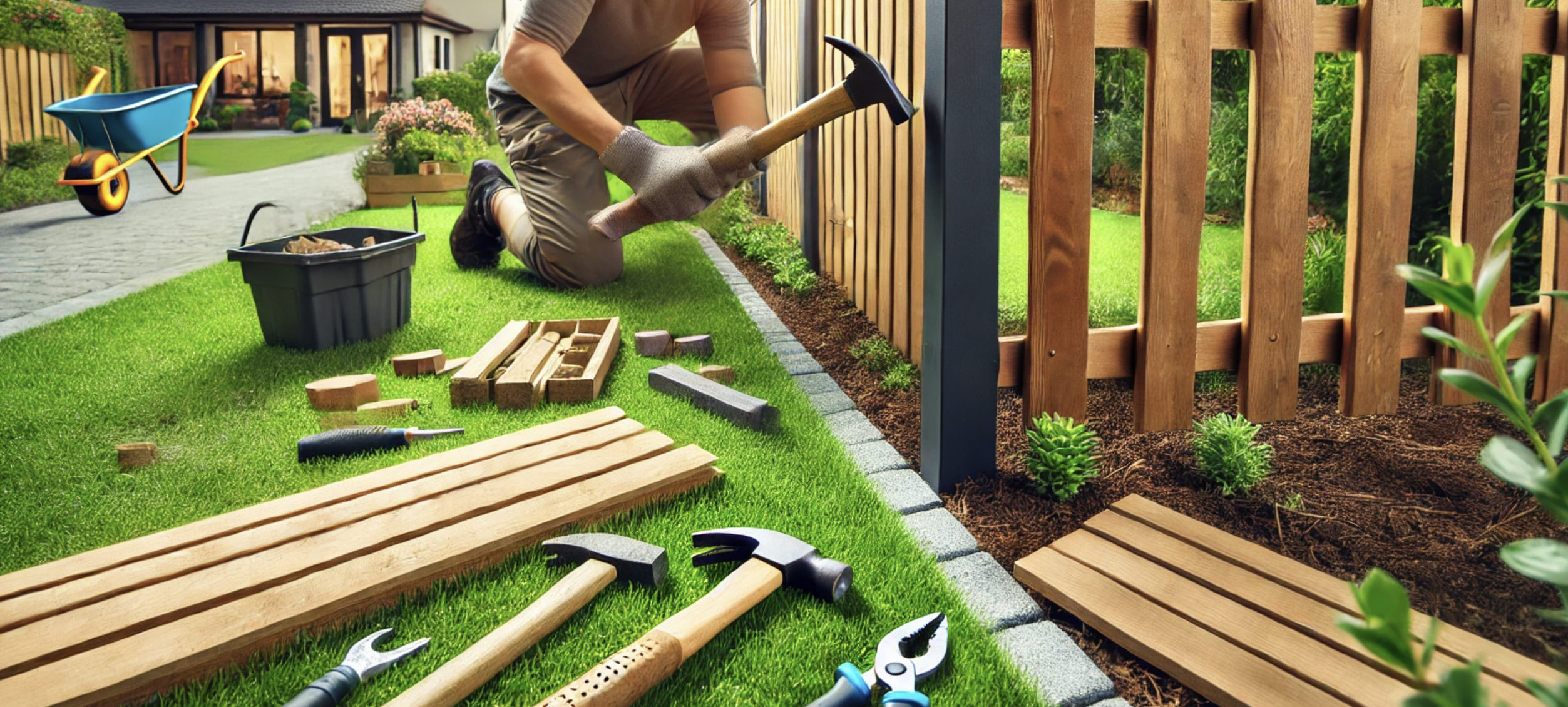The UK's weather is notoriously wet and windy, which can disrupt our well-kept gardens. A common issue is the annoying rattling noise from garden fence panels shaken by the wind, which can be loud enough to disturb you inside, especially at night when you're trying to sleep.
So, how do you stop fence panels from rattling? Interestingly, this rattling means your fence is flexing to let wind pass through — a sign it's functioning correctly and withstanding the elements. But there are potential improvements you can make.
How to Stop Fence Panels From Rattling?
Fortunately, you can stop that rattling with a few easy DIY fixes, often without needing professional help. Try adding rubber spacers or foam inserts between the panel and post for traditional or composite fence panels to absorb vibrations. Secure the panels with clips to hold them firmly in place and consider using fence panel wedges or channel nuts to lock the panels tightly.
Let's take a deep dive into potential fixes.
Use Fence Panel Wedges
Fence panel wedges are designed to fill the gaps between the fence post groove and the fencing panel, reducing the space for movement and minimising noise. Using wedges can also help prolong the lifespan of your fence panels. How long fence panels last depends on the material and maintenance, but typically, they endure between 10 to 15 years.
How Fence Panel Wedges Work
You gently push the wedges into the gap between the fence post and the fence panel to reduce the space for the panel to move. By reducing the space, the panel can no longer move and collide with the post, thus halting the rattling noise.
How to Install Fence Panel Wedges
- Determine the initial placement: Use your hands to push the wedges into the gap as far as possible.
- Secure with a hammer: Tap the wedges further into place, ensuring a snug fit.
- Account for expansion: Consider the timber's seasonal expansion and contraction. You may need to replace the wedges periodically to maintain their effectiveness.
Key Takeaway: Fence panel wedges are an easy and effective DIY solution to stop fence panels from rattling. However, periodic replacement may be necessary due to timber expansion.

The ever-popular 6x6 fence panels supplied by Trade Warehouse
Use Channel Nuts for Fence Panels
Channel nuts are another great option for preventing fence panels from rattling in the wind. They are rectangular metal plates with springs attached to one side. Like wedges, channel nuts are installed in the gap between the fence and post but have added benefits.
Benefits of Using Channel Nuts
The springs allow the nuts to accommodate the expansion and contraction of the timber, maintaining a tight fit. Their metal construction ensures a long-lasting solution compared to wooden wedges.
How to Install Channel Nuts
- Place the channel nuts: Push the channel nuts into the gap between the fence post and the panel.
- Secure with a hammer: Hammer the nuts into place, ensuring the springs are compressed to provide resistance.
The springs in the channel nuts adjust to the timber's movement, maintaining a secure fit over time.
Alternative DIY Approaches to Stop Fence Panel Rattling
If you're looking for more DIY solutions, several alternative methods exist to stop the rattling noise. These quick fixes can be easily implemented using everyday household items.
Using Newspaper as a Quick Fix
Georgina Burnett, known as The Home Genie, highlighted on ITV's This Morning that using newspapers can be an effective short-term solution. Wedge a rolled-up newspaper into the gap between the fence post and the panel. Paint the newspaper to match the colour of your fence for a more aesthetic look. The elements will degrade the newspaper over time, requiring periodic replacement.
Applying Silicone Sealant
Another temporary solution is using silicone sealant. This method is easy to apply and provides short-term stability for the fence panels. Apply a silicone sealant strip along the vertical joints between the panels and fence posts. The sealant secures the panel to the post, preventing movement and reducing noise. Silicone isn't a permanent solution, but it works well for a while and can be easily reapplied.
Adding Rubber Spacers or Foam Inserts
For a more durable solution, consider using rubber spacers or foam inserts. Place rubber spacers or foam inserts between the panel and post to absorb vibrations. This material dampens sound and reduces movement, keeping panels secure even on windy days. Unlike paper, rubber and foam tend to last longer, making them a more reliable fix.
These approaches are ideal as part of a regular maintenance routine. Properly cleaning fence panels can keep them looking tidy and well-secured over time.
Frequently Asked Questions
How do you stop wobbly fence panels?
To stop wobbly fence panels, secure them with additional brackets or clips and reinforce any loose posts with concrete or gravel for added stability.
Should fence panels rattle in concrete posts?
Fence panels should not rattle in concrete posts; adding rubber spacers or foam inserts can help reduce movement and prevent rattling noises.
How do I keep my fence panels from sagging?
To prevent fence panels from sagging, use strong, treated wood posts, reinforce with cross braces, and secure each panel firmly with screws or brackets.
How do you stop fence panels from blowing out?
Prevent fence panels from blowing out by securing them tightly with metal clips, adding support brackets, and ensuring posts are firmly set in concrete.

